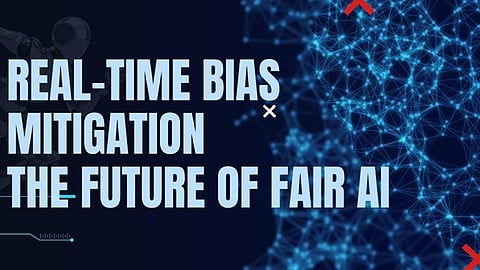

Artificial Intelligence (AI) has revolutionized industries, yet the challenge of bias remains a significant hurdle. In a world where automated decisions impact hiring, customer service, and content creation, ensuring fairness is paramount. Shekhar Agrawal discriminatory outcomes in automated decision-making. Traditional bias mitigation methods often focus on pre-deployment adjustments, which fail to address evolving biases in real-time applications. The need for a dynamic and continuous monitoring system has never been more pressing.
The suggested framework has an innovative real-time bias detection mechanism that continuously monitors AI-created content. Based on statistical testing techniques, it detects anomalies in demographic composition, sentiment pattern, and relations between model outcomes and protected attributes. In contrast to traditional static mechanisms, the real-time monitoring feature enables AI systems to dynamically adjust, guaranteeing fairness without efficiency loss. The framework uses advanced anomaly detection mechanisms to signal suspected bias incidents prior to affecting downstream tasks. With ongoing feedback cycles and self-calibration methods, the system operates at optimal capacity while learning to respond to changing data distributions and new fairness demands. This forward-looking process remarkably minimizes the likelihood of reinforcing systemic prejudices in AI solutions.
One of the most groundbreaking features of the framework is its adaptive correction mechanism, driven by reinforcement learning. The system continually improves model responses by integrating fairness metrics and privacy-preserving methods. The reinforcement learning mechanism allows AI models to learn from historical biases and self-correct without any human intervention, becoming more ethical and efficient in the long run. The system uses a multi-agent architecture that facilitates distributed learning across model components, optimizing the efficiency of bias correction. Federated learning protocols allow the system to exchange bias mitigation strategies across multiple deployments while ensuring data privacy. This collaborative effort speeds up the development of effective fairness solutions that generalize across diverse use cases.
One of the biggest challenges in mitigating bias is to ensure that corrections do not violate user privacy. The system incorporates differential privacy methods to protect sensitive data. This enables AI systems to correct biased results without revealing personal information, establishing a new benchmark for ethical AI development. The system also employs fine-grained access controls and data anonymization mechanisms that preserve individual privacy while allowing for effective bias analysis. These protections guarantee conformity to worldwide privacy laws while keeping the framework effective for detecting and countering algorithmic bias.
The real-time bias mitigation framework is intended for mass-scale business usage. Its modular design features a bias detection engine, an ethically-aligned correction module, and a real-time monitoring system. These elements interact through a secure messaging system, promoting quick response times while ensuring fairness and transparency. The system employs sophisticated machine learning algorithms that regularly update to learn new patterns of bias, yet ensure system efficiency. A fully featured dashboard allows stakeholders to see detailed analytics and customizable alerts, facilitating proactive action when potential biases are identified. The system's strong error handling and failover capabilities provide seamless bias monitoring even under high-load conditions, making it suitable for mission-critical use cases.
AI fairness must not compromise performance. The framework utilizes optimized algorithms that strike a balance between computational efficiency and ethical concerns. Through adaptive thresholds and domain-specific metrics, the system achieves high accuracy while minimizing biased outputs. This ensures that AI applications are both fair and effective across different industries. The system includes real-time monitoring and feedback loops to continuously adapt model parameters, avoiding performance deterioration while upholding fairness constraints. Through strict validation procedures and cross-domain testing, the system proves that ethical AI deployment can be compatible with and even complement operational excellence, establishing new benchmarks for responsible AI development.
As AI technology advances, fairness issues will keep changing. The way forward lies in combining multimodal approaches to fairness that mitigate biases in text, speech, and image recognition technologies. The cultivation of culturally-sensitive AI systems will also be essential in the maintenance of fairness in various global markets. This will necessitate strong collaboration among AI researchers, cultural anthropologists, and local stakeholders to create context-specific fairness metrics and assessment frameworks. In addition, the application of dynamic fairness evaluations that respond to shifting societal values and norms will be needed to ensure ethical AI systems in a more interconnected world.
In conclusion ,Shekhar Agrawal’s real-time bias mitigation framework represents a significant leap forward in ethical AI. By combining real-time monitoring, adaptive learning, and privacy-preserving techniques, this approach sets a new benchmark for fairness in AI applications. As AI adoption expands, such innovations will be essential in building trust and ensuring that technology serves all users equitably.
